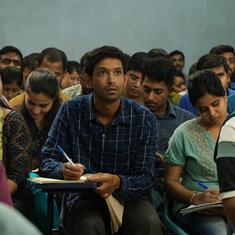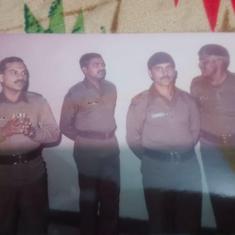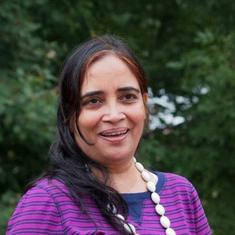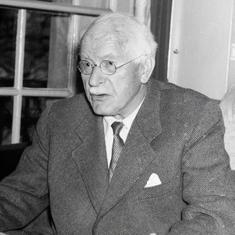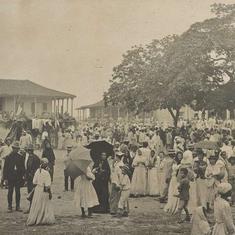Never in my life had I attended a “writing retreat”, but when the email stating that Ranjit Hoskote would be hosting a three-day “Nature and Writing” masterclass at the Himalayan Writing Retreat in Satkhol, I decided on the spot that this was one for me.
The excitement began with an email from Ranjit, folders of poetic treasure attached, to read before we arrived. Pulled straight into Robert Macfarlane’s article from almost ten years ago about his journey to collect vernacular words and phrases from around the British Isles which pinpoint specific local ecological detail – names for cloud formations, types of ice-melt and other landscape specific words – it all felt very much in line with what I am writing about right now, though my own work focuses on vanishing species in India and spaces of previously unique biodiversity, now earmarked for “development”.
The night before it is time to leave for the retreat, I attend an online talk at Champaca Books with Amitava Kumar, who is discussing his latest work, The Green Book. During the talk, he too discusses nature writing and speaks of how he often takes his students around city parks to observe and write. To pay attention, he emphasises and I suddenly realise why I’ve decided so emphatically to book time off work at this critical moment in the term. It’s that gift of close focus that a retreat allows, the liberty to write without distraction, to scrutinise detail with the luxury of time. To glean the essence of a place, to become porous. To absorb and reiterate with precision and sensitivity.
“If you don’t know the names of the trees in your city, then you’re not a writer,” states Amitava, unceremoniously. In my imagination, I am walking up tiny Welsh lanes or over the hills on sheep paths with another strict teacher: my Mother. “Now pay attention,” she is saying. “This is Lady’s Slipper, this is Vetch, this is a Cowslip, now getting rare; and this is Ragged Robin.” I furrow my nine-year-old brow, committing whole hedgerows to memory. I have the pictures in my Flower Fairy poetry books for reference too. All that close observation holds fast to this day and although there are many other species to be learned afresh in both the Himalayan and Haryanvi terrains which have become my homes, I recognise variants and realise how vital it was that I once learned by heart the names of things that grow.
A four-hour hairpin bend drive takes us up into the hills above the tiger forests of Jim Corbett and into orchards and valleys. White plum and almost magenta-pink apricot blossom burst their buds; and on claret trees to take your breath away, the rhododendron is in bloom. Bright and dark as deep wine on deeper lips, its colour spills all over the mountainside.
The air, once we reach the Guest House, is full of birdsong and in the distance (live) wedding music. Singing, the strains of a harmonium and the beat of the dholak waft across to me. Inevitable building works and the blast of amplified wedding music take over at a certain point as celebrations shift from the traditional to 21st-century celluloid dreams – then once again, there is silence sweet enough to hear the robins and blackbirds in the gaps. A dog howls gently in the distance. Hoe thwacks, pails twang, scooters zoom, birds ripple. I’m beginning to hear a distinction, already.

For three mornings, our Masterclass mentor, Ranjit Hoskote, guides us through images, poems, filmscapes. As a group, 13 poets, writers and translators discuss, write, share, edit, observe their inner natures and the outer world that surrounds them. By afternoon each day, this quickly intimate knot of beings are invited to disperse, to “go into Nature” and bring back thoughts, poems in different forms, sensed through different senses. The pace is both relaxed and intense. The attention we are required to bring to each contributor’s work and selected prompt rivals the most intellectual university classes in my memory and mysteriously, the fact that we are in the middle of fields and hills makes the experience even more demanding than if we were sheltered in ivory towers. Perhaps we are being challenged to connect more deeply with the real world, with Earth herself.
To clarify, I ask Ranjit what he feels is so important about engaging with Nature through writing.
“The ecological catastrophe that we, as a species, have triggered off is arguably the single most important strand within the polycrisis of this epoch. It is vital that, as writers, we address this situation and find ways of bearing witness to this situation, to our own responsibility and indeed our culpability within this situation, and to possibilities of amelioration and redemption.”
(Writers, no pressure).
I want to know why Ranjit has chosen to offer this masterclass in the hills of Satkhol rather than the far less challenging venues of Mumbai or Delhi, especially given that our location is not within very easy reach of anywhere.
“It is possible to reflect closely on an ethics of testimony in a place like The Himalayan Writing Retreat. Why Satkhol, or more broadly, why the Kumaon Himalaya? Because here, we stand in the presence of nature-in-itself – the panoramic vista of the snow-capped Nanda Devi range, the serene clouds, the miles and miles of oak and pine forest – even as we recognise the unmistakable signs of human interference in nature. We recognise that the glaciers are shrinking; we see the forest fires flare up in the valleys; we walk along a path that was scorched by a forest fire not two weeks before, leaving charred rhododendron shrubs and cindered pine behind. Nature, here, is neither an idyllic tabula rasa waiting for us to inscribe it, nor is it a radically alien and forbidding wilderness. As writers, we are able to experience the close weave of the tame and the wild, the cultivated and the forested – as we walk around, taking in the sensory impressions of this landscape, we see that oak groves and small farm holdings are adjacent and even intersect. We hear the distinctive sawing growl of leopards and the lowing of cows and calves, predators and livestock in close adjacency. We receive a visceral awareness of how nature claims and affects us, and how we have claimed and affected nature – this is not available in such an immediate and full-bodied manner at a distance, in the comfort of the city, the library, the archive. Even in microcosm, our days at Satkhol draw us into the complex tapestry of the inter-species interrelationships that sustain ‘nature’.”
I ask the co-founders of the Himalayan Writing Retreat, Chetan and Vandita, a similar kind of question: as original city dwellers, what prompted their move to remote hills and how did the vision for a Writing Retreat come about?
“We had left Gurgaon without a plan,” they confess. Vandita had her psychology practice
which kept her professionally occupied. Chetan, on the other hand, was in a complete professional vacuum. “We knew what we did not want – city life and its inherent pressures. What we wanted was a simple life and meaningful engagement with the world. When we started it, we didn’t know it would take this shape and form. It wasn’t strategic forethought. It was a shot in the dark. A big part of the vision is supporting writers and our community. Our Fellowship and residencies offer amazing value for free to selected writers. We support the NGO-run Chirag School – an absolute gem. Through our First Draft Club, we raise a quarter of its annual budget. And our Book club with 600+ members is free.”
So, I ask this enterprising couple: What can writers find here that’s absent in the city?
“Inspiration, and a lack of distractions,” replies Chetan in a heartbeat. “We are often asked why we don’t offer our courses in the city as well,” adds Vandita. “But when you do anything in the city, the noise doesn’t leave you. The distractions pull you in multiple directions. You’re still not disengaging from life to focus on your craft. A 9-to-5 course where you drive through traffic to and from the venue, and where the mundanity of the everyday humdrum sucks you back to your routine doesn’t really give you a break.” Chetan nods in agreement. “We take learning seriously, taking the many elements of effective learning and bringing them together. These include eliminating distractions and having excellent teachers. It also involves thinking deeply about what will be taught, and how.”
Chetan waves his arm to encompass the majesty of the view. “The final touch, of course, is the sheer glory of nature,” he declares. “Snow-capped peaks, birdsong, clean air when combined with the careful attention to detail that Vandita brings make for enchantment. It elevates our workshops
from being learning experiences to being indelible memories. Many participants from years ago still stay in touch. One other thing we pride ourselves on is the small group experience. We draw the line at 12, or 15 in a few cases, but never go above that. We give real, deep feedback. Everybody gets close, personal attention. We don’t want learning with us to feel like a lecture hall, but a hands-on, safe experience where people learn by doing.”

As far as “learning by doing” is concerned, it’s time to put theory into practice and Ranjit is keen to send the group out into the surrounding landscape to observe and listen quietly and at as close quarters as possible. I walk down winding paths for half a mile until I reach an ancient village spring and reservoir whose sweetness of water makes me wish I could drink water like this forever. As well as recognising different fruit trees – there are even ripe lemons in early March at this semi-tropical altitude. I am delighted to spot a flash of green-gold – a Greenfinch – and listen under the bough it has alighted upon as it instructs me quite definitely in a tongue (beak?) I do not quite understand. I feel optimistic to see so many different kinds of butterflies, too. I scrawl haiku, cinquains and pages of dialogue.
Back at base, in the sun-warmed living room, sprawling with books and heaped with cushions, we share our bounty of foraged words like squirrels at a Spring festival. I ask Ranjit whether the landscape and residency have allowed him to write any poetry of his own or whether he has experienced any particular connection with species other than human. He tells me that “the falcon and the greenfinch, oak and pine and rhododendron, the dogs at the Retreat and the calves in the homestead down the slope” have all made their presence known to him. “I had hoped to work on some of my own poems,” he continues, “but I know, from previous experience, that this does not happen when I am acting as mentor or facilitator or teacher. I become immersed in the pedagogical situation, which demands my complete attention – in terms of being fully responsive to the participants, in dialogue with them, engaging closely with their work and their thinking.”
Ranjit’s generosity to each and every one of us is indeed remarkable: our poetic outpourings receive written as well as verbal feedback and suggestions. I find that by the end of three days, I am self-appraising my own work at a different level.
My final question to Ranjit is about whether he feels there is a difference between going into retreat to write as an individual and coming to write as part of a group with similar interests in honing skills in nature writing.
“My method,” he explains, “in the masterclasses and workshops I do is to bring the group of participants together in a process of dialogue, distinguished by engaged and respectful exchange, active listening and trust-building. This is a workshop scenario, not a classroom script. My responsibility is to act as a convener who talks with, not a teacher who talks at or talks down to; I see myself as a conductor who brings the various contributors in the orchestra together, to articulate a fruitful polyphony. I find that it is far more fruitful and participatory when people arrive at ideas and conclusions through what I like to think of as a process of gently guided discovery. Importantly, in a masterclass or workshop setting, all the participants become aware of one another’s practices and predicaments, one another’s potentialities and constraints. In my experience, the fact of being in such a space of sharing considerably expands our field of experience as individuals – as readers, writers, human beings and citizens.”
The proof is in the proverbial pudding and I am gently guided to see how re-writing a series I have been working on about endangered species on Great Nicobar could work so much better in the first person, or (as I self-correct myself) in “first animal”. Though there have been moments of trepidation about sharing my innermost practice with a group of initial strangers – thankfully, old friends by the end of three days – there has also been a seismic shift in my perception about where my particular writing practice fits within the community of poetic writers and artists at large. I discover that although I am most comfortable writing on my own in a self-made retreat, pushing through insecurities has actually helped me to put things down on paper in a way I didn’t expect to, opening old, half-forgotten doors within myself and exploring what I find behind them with new-found courage in the company of friends.
Like Chetan and Vandita, I anticipate that there will be increasing numbers of urban-dwelling artists and writers who feel the need for a safe space in which to create. As satellite towns of the major metropolises expand with seemingly insatiable frenzy, it seems likely that more and more of us will soon be running for the hills. Before I say goodbye to this haven, I ask the founders about their future plans and dreams, but it seems it is actually right here, right now, that is most important to them.
“Nature planned and designed us. We are the outcome of forces we still barely understand. We feel that connection in our bones when we walk in a forest, when we see a clear, starlit sky or when we confront an ocean. Not so much when we look at a potted plant. We are not going to change anything in the future. We will continue to do what we do: to respect and honour nature.”
Let’s hope that many more feel the same need to glean inspiration in the remaining quiet places in our busy world – and that Nature feels moved to share her secrets with those of us ready to listen to her with respect and a sense of profound connection.

